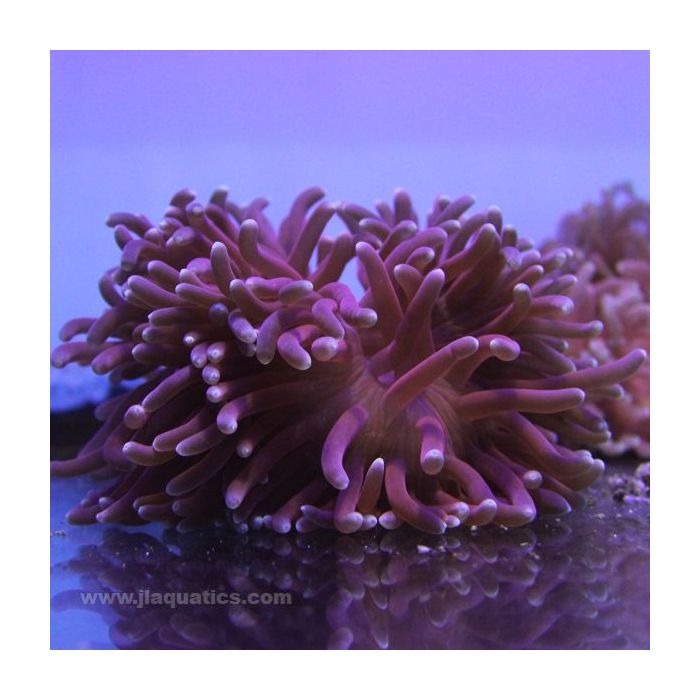Long Tentacle Anemone - Ultra
Anemones have a central mouth surrounded by stinging tentacles which can capture small creatures and deliver them to the mouth. The sting is often quite strong and capable of damaging corals and injuring fish. Small fish such as firefish and dragonets may accidently swim directly into the anemone and be killed. Large anemones such as carpets may even kill larger fish. The addition of a night light greatly aids fish in avoiding the anemones. The tentacles are often very sticky and can cause painful sores. Some animals are specially adapted to live within anemones, such as Periclimenes shrimp and Porcelain crabs.
Anemones receive most of their energy from the light, which should be very bright. Metal halide is the preferred lighting for most anemones. Feeding should be at least twice weekly and consist of small meaty items such as Mysis or chopped krill. Large specimens may take diced fish.
The foot of the anemone enables them to adhere to glass and also to crawl around the aquarium. They can also float in the water to move quickly. Newly introduced specimens often wander for some time before settling down. At any time it may relocate, and is prone to being sucked into powerheads; all pumps should be screened for safety. Its foot is delicate and should never be damaged. Protein skimming is recommended to oxygenate the water sufficiently. Stable water conditions are important, and anemones are only recommended for mature aquariums.
This incredible animal has slender tentacles and may grow up to 19 inches. It prefers to bury its foot in the sand. Most ultra colored specimens are bright purple. It can be identified by stripes radiating out from the mouth, and small bumps along its column. It may host any clownfish species, hosting easiest with Clarkii, Skunk, Saddleback and Maroon complexes.
















